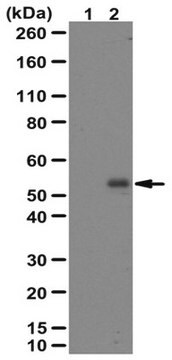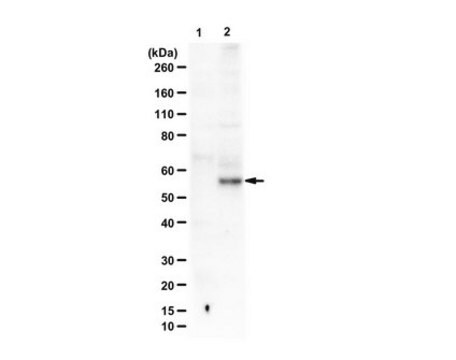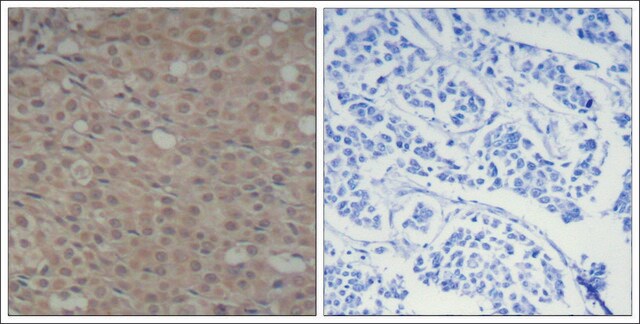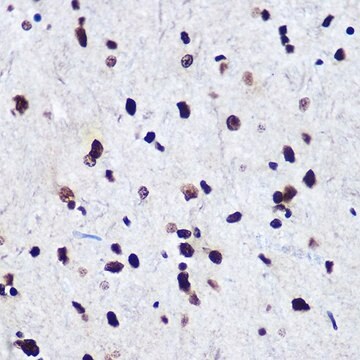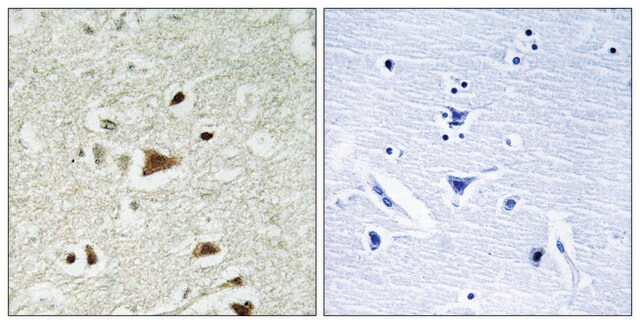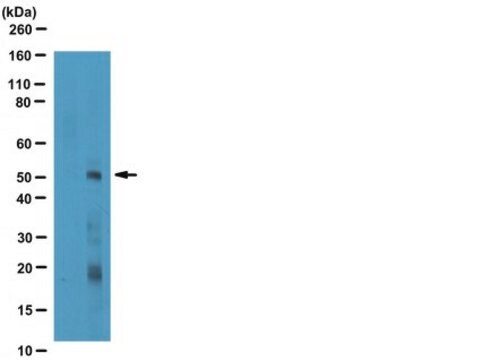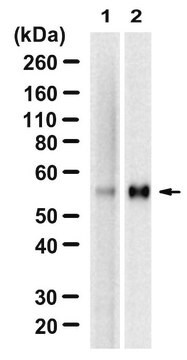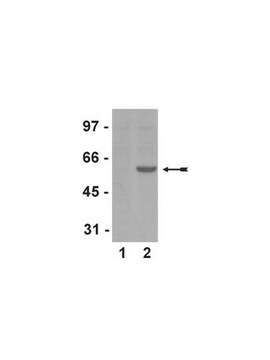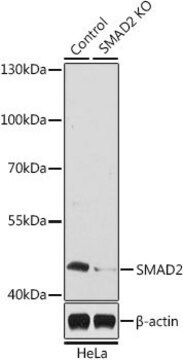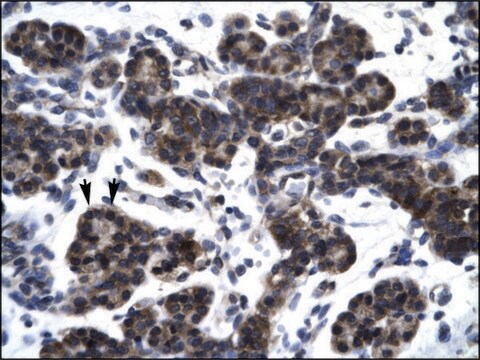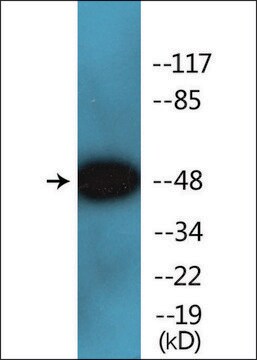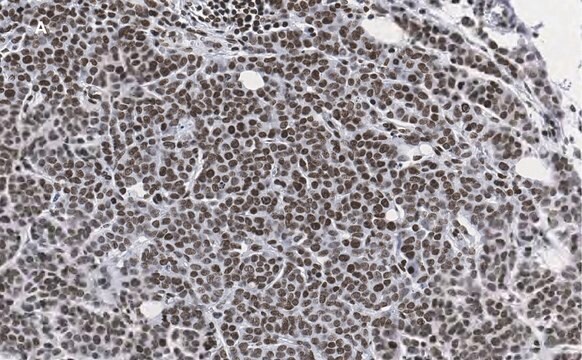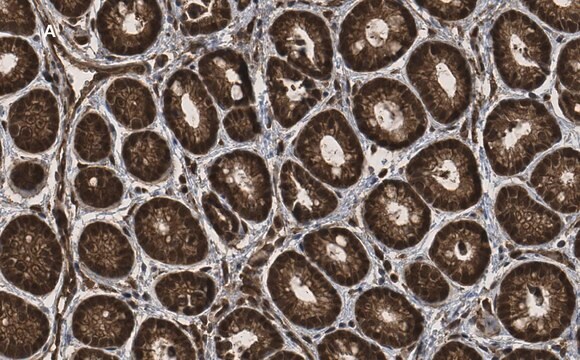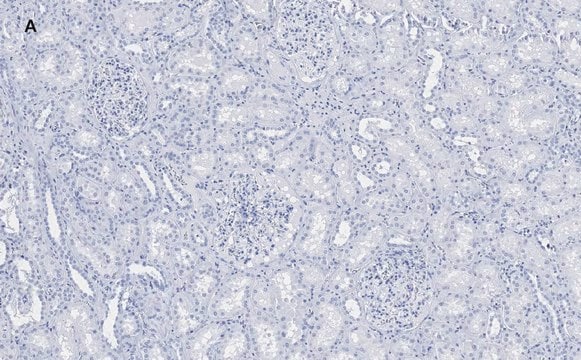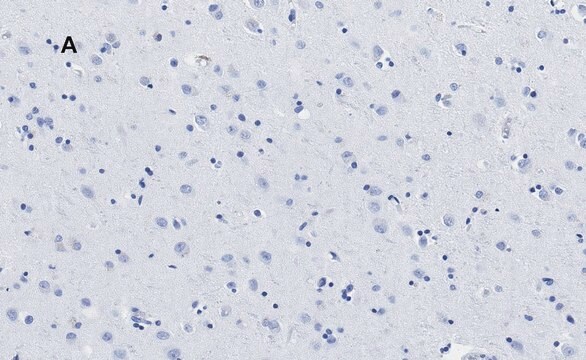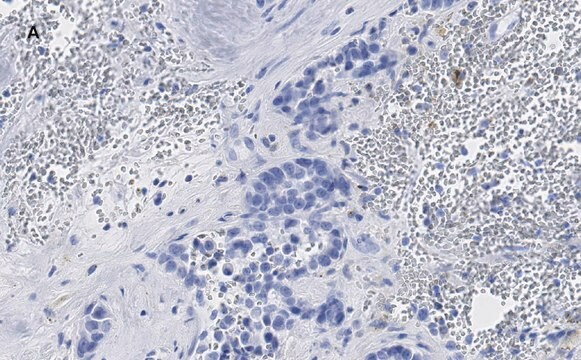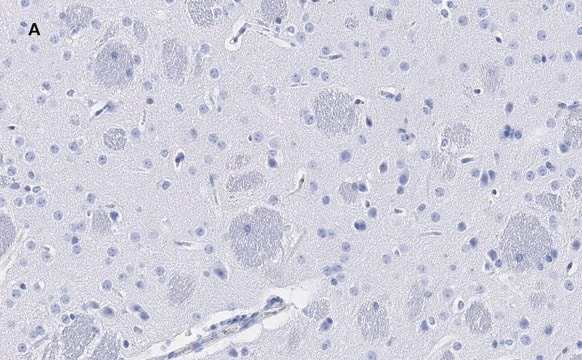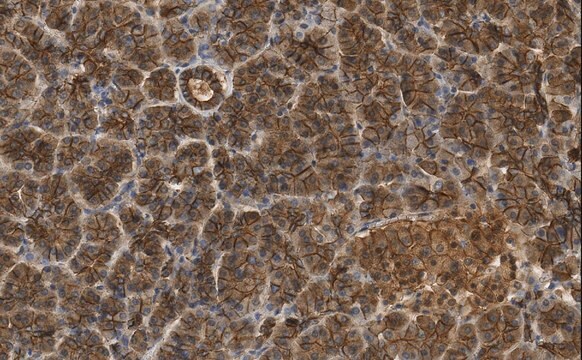ZRB04953
Anti-phospho-Smad2 (Ser465/467) Antibody, clone A5S, ZooMAb® Rabbit Monoclonal

recombinant, expressed in HEK 293 cells
Sinónimos:
JV18-1, MAD homolog 2, Mad-related protein 2, Mothers against DPP homolog 2, Mothers against decapentaplegic homolog 2, SMAD family member 2, hMAD-2, hSMAD2
About This Item
Productos recomendados
origen biológico
rabbit (recombinant)
Nivel de calidad
recombinante
expressed in HEK 293 cells
conjugado
unconjugated
forma del anticuerpo
purified antibody
tipo de anticuerpo
primary antibodies
clon
A5S, recombinant monoclonal
monoclonal
Línea del producto
ZooMAb® learn more
Formulario
lyophilized
mol peso
calculated mol wt 52.31 kDa
observed mol wt ~55 kDa
reactividad de especies
human
reactividad de especies (predicha por homología)
mouse, rat
envase
antibody small pack of 25 μL
características de los productos alternativos más sostenibles
Waste Prevention
Designing Safer Chemicals
Design for Energy Efficiency
Learn more about the Principles of Green Chemistry.
validación mejorada
recombinant expression
Learn more about Antibody Enhanced Validation
sustainability
Greener Alternative Product
técnicas
immunocytochemistry: suitable using 1:100
immunohistochemistry (formalin-fixed, paraffin-embedded sections): 1:100-1:200
inhibition assay: suitable using 1:1,000 (peptide)
western blot: suitable using 1:1,000
Nº de acceso UniProt
categoría alternativa más sostenible
Condiciones de envío
ambient
temp. de almacenamiento
2-8°C
modificación del objetivo postraduccional
phosphorylation (pSer465/pSer467)
Información sobre el gen
human ... SMAD2;MADH2;MADR2(4087)
Descripción general
Each ZooMAb antibody is manufactured using our proprietary recombinant expression system, purified to homogeneity, and precisely dispensed to produce robust and highly reproducible lot-to-lot consistency. Only top-performing clones are released for use by researchers. Each antibody is validated for high specificity and affinity across multiple applications, including its most commonly used application. ZooMAb antibodies are reliably available and ready to ship when you need them.
Learn more about ZooMAb here.
Especificidad
Inmunógeno
Aplicación
Immunohistochemistry (Paraffin) Analysis: A 1:200 and 1:100 dilution from a representative lot detected phospho-Smad2 (Ser465/467) in human breast cancer and human colon cancer tissue sections.
Peptide Inhibition Analysis: A 1:1,000 dilution from a representative lot was used with HeLa cells treated with TGF-beta for peptide block analysis.
Descripción de destino
Forma física
Reconstitución
Almacenamiento y estabilidad
Información legal
Cláusula de descargo de responsabilidad
¿No encuentra el producto adecuado?
Pruebe nuestro Herramienta de selección de productos.
Código de clase de almacenamiento
11 - Combustible Solids
Clase de riesgo para el agua (WGK)
WGK 2
Elija entre una de las versiones más recientes:
Certificados de análisis (COA)
¿No ve la versión correcta?
Si necesita una versión concreta, puede buscar un certificado específico por el número de lote.
¿Ya tiene este producto?
Encuentre la documentación para los productos que ha comprado recientemente en la Biblioteca de documentos.
Los clientes también vieron
Nuestro equipo de científicos tiene experiencia en todas las áreas de investigación: Ciencias de la vida, Ciencia de los materiales, Síntesis química, Cromatografía, Analítica y muchas otras.
Póngase en contacto con el Servicio técnico